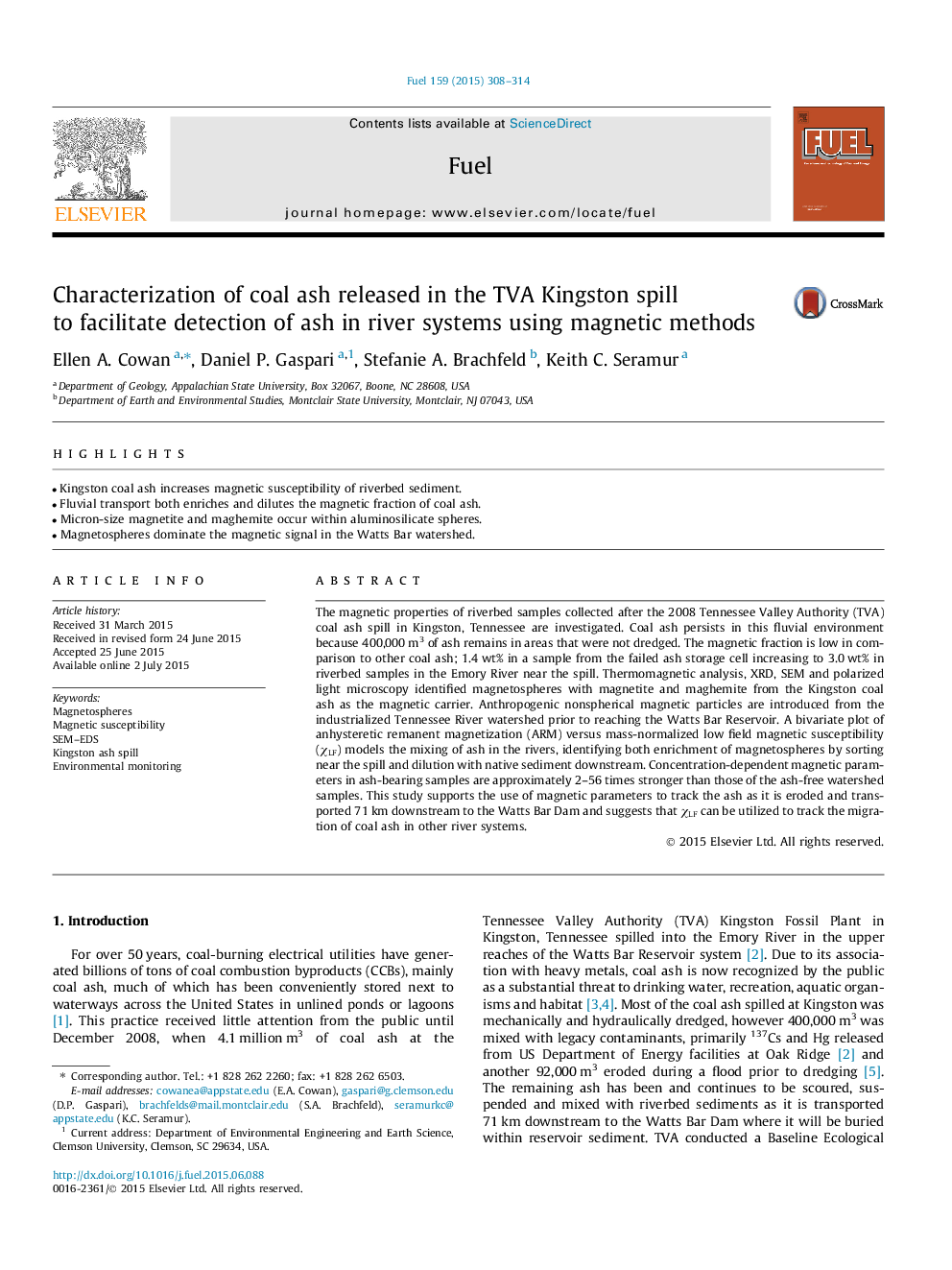| Article ID | Journal | Published Year | Pages | File Type |
|---|---|---|---|---|
| 6634621 | Fuel | 2015 | 7 Pages |
Abstract
The magnetic properties of riverbed samples collected after the 2008 Tennessee Valley Authority (TVA) coal ash spill in Kingston, Tennessee are investigated. Coal ash persists in this fluvial environment because 400,000Â m3 of ash remains in areas that were not dredged. The magnetic fraction is low in comparison to other coal ash; 1.4Â wt% in a sample from the failed ash storage cell increasing to 3.0Â wt% in riverbed samples in the Emory River near the spill. Thermomagnetic analysis, XRD, SEM and polarized light microscopy identified magnetospheres with magnetite and maghemite from the Kingston coal ash as the magnetic carrier. Anthropogenic nonspherical magnetic particles are introduced from the industrialized Tennessee River watershed prior to reaching the Watts Bar Reservoir. A bivariate plot of anhysteretic remanent magnetization (ARM) versus mass-normalized low field magnetic susceptibility (ÏLF) models the mixing of ash in the rivers, identifying both enrichment of magnetospheres by sorting near the spill and dilution with native sediment downstream. Concentration-dependent magnetic parameters in ash-bearing samples are approximately 2-56 times stronger than those of the ash-free watershed samples. This study supports the use of magnetic parameters to track the ash as it is eroded and transported 71Â km downstream to the Watts Bar Dam and suggests that ÏLF can be utilized to track the migration of coal ash in other river systems.
Related Topics
Physical Sciences and Engineering
Chemical Engineering
Chemical Engineering (General)
Authors
Ellen A. Cowan, Daniel P. Gaspari, Stefanie A. Brachfeld, Keith C. Seramur,
